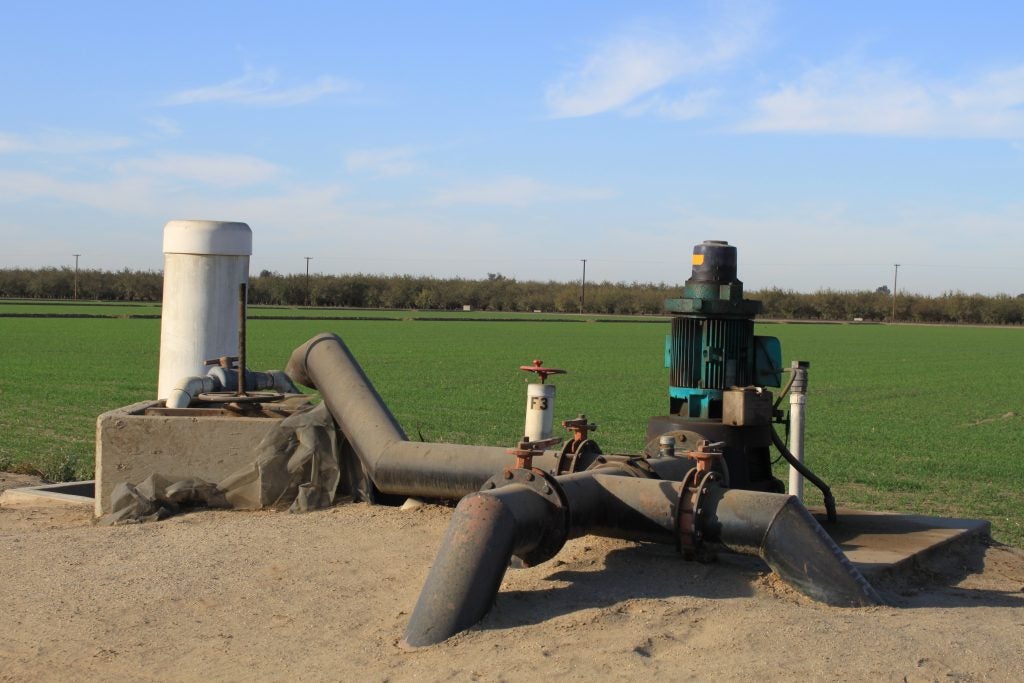One of the biggest challenges to implementing California’s Sustainable Groundwater Management Act hovers around this two-part question:
Who gets to pump groundwater and how much do they get to pump? Or, put another way, who must cut their groundwater use and by how much?
As local groundwater agencies try to answer this difficult question on how to develop allocations, they face one major constraint: They can’t change groundwater rights.
Consequently, the path forward for many groundwater agencies is riddled with legal complexities and questions around equity that shouldn’t be ignored.
To provide more clarity to groundwater agencies, I’ve been working with three leading water attorneys — Eric Garner, Russ McGlothlin and Valerie Kincaid — and University of Virginia law professor Leon Szeptycki on an article in the UCLA Journal of Environmental Law and Policy that takes a deep dive into the relationship between SGMA and groundwater rights. We will hold a Zoom webinar to discuss the article and answer questions on Tuesday, Oct. 20, at 10 a.m. Please save the date and register at www.edf.org/SGMAwebinar.
Finding a consistent path forward for groundwater allocation
In “The Sustainable Groundwater Management Act and the Common Law of Groundwater Rights — Finding a Consistent Path Forward for Groundwater Allocation,” we identified two major steps groundwater agencies can take to minimize legal risks — acknowledging that they are easier said than done:
- Allocate groundwater consistent with the principles of water rights, and consider using a hybrid model to divide the groundwater pie to best address all needs.
- Encourage and facilitate negotiations to achieve consensus and reduce potential opponents.
Groundwater sustainability agencies have considered at least four ways to divide groundwater: by gross acreage of land; net irrigated acreage of land (whether irrigated by groundwater or surface water); historic or current pumping levels; and some hybrid of these approaches that also considers other broad economic or equity principles.
Our article concludes any model based on a single factor has legal vulnerabilities and is more likely to create aggrieved landowners disadvantaged by the one-factor approach.
Instead, a hybrid allocation model that integrates multiple factors and reflects relevant legal principles is a stronger solution that more likely aligns with the common law and provides a framework for negotiations. We discuss the specific factors and legal principles that groundwater sustainability agencies may draw upon in our article. The appropriate mix will inherently depend on the applicable facts, including the nature of the water uses in the basin and historical and current hydrogeologic conditions.
Two paths to achieve legally sound water solutions
One route to creating a hybrid model is to start with a basic allocation using one measurement, such as historic pumping, and then set up a system for modifying that initial allocation based on a set of additional factors, such as investments in groundwater irrigation, reliance on groundwater, water conservation efforts and historic overpumping.
A second route is to use a diverse set of factors that reflect basin-specific considerations — including gross acreage, irrigated acreage and historic pumping — to create a more integrated system to allocate water.
Each route must take into account equity issues.

Well and pump in San Joaquin Valley, California. (Photo credit: Chris Austin, Maven’s Notebook)
How to ensure the rights to groundwater for people and nature
With just a few exceptions, past water cases generally ignore two critical tasks groundwater agencies must address under SGMA: ensuring water for wetlands, streamflow and other groundwater-dependent ecosystems, and providing water for disadvantaged communities that often depend on declining or contaminated aquifers.
One potential model comes from the Mojave Basin, where an adjudication set groundwater level standards along the Mojave River to meet the water needs of endangered and other species and riparian habitat. When groundwater level standards are not met, a trust fund provides money for purchasing water, constructing wells or completing projects proposed by the California Department of Fish and Wildlife.
Another case, the Main San Gabriel adjudication, allows a watermaster to set water flow levels through local agreements.
California became the first state to legislatively recognize the human right to water through a law signed in 2012. To help ensure the human right to water, groundwater agencies can evaluate projects that protect shallow wells serving disadvantages communities, including connection to suppliers with deeper wells or even deepening wells where appropriate.

Ducks wade in the Mojave River in Afton Canyon, the only place where the river flows above ground year round, providing significant riparian wildlife habitat amid the desert. An adjudication set groundwater level standards along the Mojave River to meet the water needs of endangered and other species and riparian habitat, providing one model for SGMA allocations. (Photo credit: Michael Dorausch)
Dialogue and compromise will reduce legal risk
Perhaps most importantly, groundwater agencies should encourage and facilitate broad dialogue across stakeholder groups to explore opportunities for compromise and consensus to minimize legal challenges.
If disputes go to court, such efforts may reduce the number of opposing parties and contested issues, expediting the process and strengthening the groundwater agency’s legal position.
Fortunately, most water users and their lawyers know that water litigation is expensive, lengthy and can have uncertain outcomes. This reality, combined with SGMA’s mandate, is also a strong incentive to compromise.
Some water disputes have lasted for decades, which all parties want to avoid as regions across the state implement SGMA. The law is too important to ensure California has enough water for people and nature for generations to come.










One Comment
The article at the link is highly relevant, as well as extremely helpful, to GSAs around the State. Thanks!